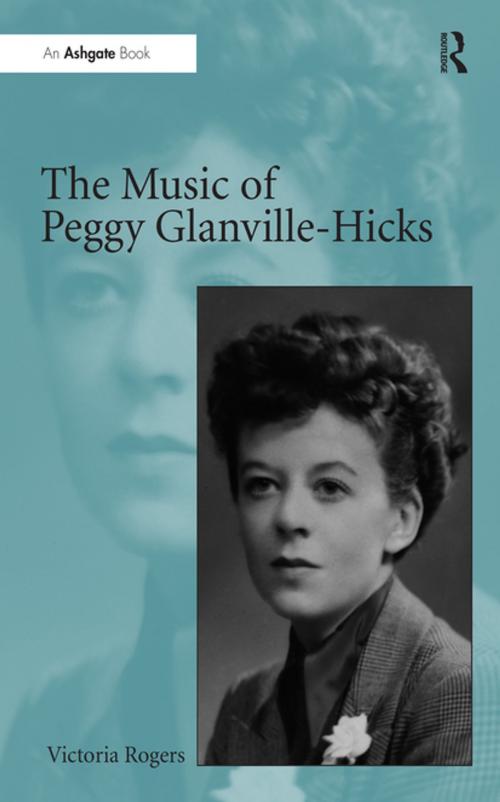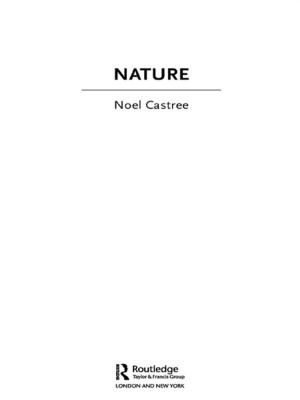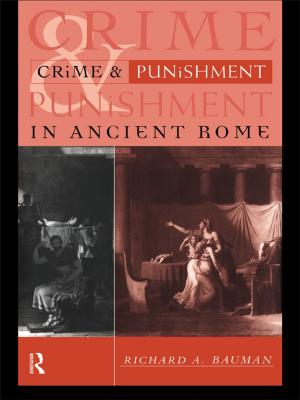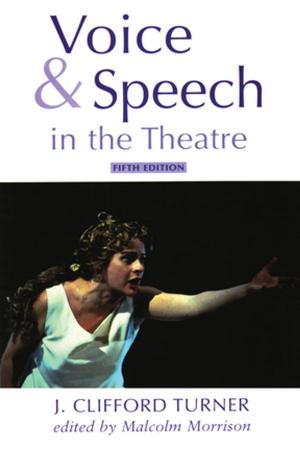| Author: | Victoria Rogers | ISBN: | 9781351542227 |
| Publisher: | Taylor and Francis | Publication: | July 5, 2017 |
| Imprint: | Routledge | Language: | English |
| Author: | Victoria Rogers |
| ISBN: | 9781351542227 |
| Publisher: | Taylor and Francis |
| Publication: | July 5, 2017 |
| Imprint: | Routledge |
| Language: | English |
Peggy Glanville-Hicks (1912-1990) is an Australian composer whose full significance has only recently been appreciated. Born in Melbourne, Australia, she transcended the gendered expectations of her upbringing and went on to become a fine composer and a highly influential figure in the vibrant musical life of New York after the Second World War. Following early composition studies with Fritz Hart in Melbourne, Glanville-Hicks moved to London where she studied with Ralph Vaughan Williams, then to Paris where she was taught by the great pedagogue, Nadia Boulanger. Her migration to the USA in 1941 shaped the musical direction of her late works. After a brief neoclassical phase, she joined the small group of American composers who were using non-Western musics as their inspirational well-spring, including Colin McPhee, Alan Hovhaness, Lou Harrison and Paul Bowles. During this period she also forged an illustrious career as a music journalist and arts administrator, working tirelessly to promote new music and the careers of young composers. In the late 1950s she retreated to Greece to write 'the big works', most notably the operas which lie at the heart of her creative output. Her compositional career ended prematurely, and tragically, in 1967 following surgery the previous year for a life-threatening brain tumour. Against all medical expectations she went on to live for a further 24 years, returning to Australia in 1975 amidst a dawning recognition that one of the country's most significant composers had returned. Glanville-Hicks's career as a composer is impressive by any measure. She produced over 70 finely-crafted works, including operas, ballets, concertos, instrumental chamber pieces, songs and choral works. The story of her life has been told in the biographies. This book traces the development of her musical language from the English pastoral style of the early works, through the neoclassicism of the middle period, to the melody-rhythm concept of the late works,
Peggy Glanville-Hicks (1912-1990) is an Australian composer whose full significance has only recently been appreciated. Born in Melbourne, Australia, she transcended the gendered expectations of her upbringing and went on to become a fine composer and a highly influential figure in the vibrant musical life of New York after the Second World War. Following early composition studies with Fritz Hart in Melbourne, Glanville-Hicks moved to London where she studied with Ralph Vaughan Williams, then to Paris where she was taught by the great pedagogue, Nadia Boulanger. Her migration to the USA in 1941 shaped the musical direction of her late works. After a brief neoclassical phase, she joined the small group of American composers who were using non-Western musics as their inspirational well-spring, including Colin McPhee, Alan Hovhaness, Lou Harrison and Paul Bowles. During this period she also forged an illustrious career as a music journalist and arts administrator, working tirelessly to promote new music and the careers of young composers. In the late 1950s she retreated to Greece to write 'the big works', most notably the operas which lie at the heart of her creative output. Her compositional career ended prematurely, and tragically, in 1967 following surgery the previous year for a life-threatening brain tumour. Against all medical expectations she went on to live for a further 24 years, returning to Australia in 1975 amidst a dawning recognition that one of the country's most significant composers had returned. Glanville-Hicks's career as a composer is impressive by any measure. She produced over 70 finely-crafted works, including operas, ballets, concertos, instrumental chamber pieces, songs and choral works. The story of her life has been told in the biographies. This book traces the development of her musical language from the English pastoral style of the early works, through the neoclassicism of the middle period, to the melody-rhythm concept of the late works,















